Jonas Jäggy
When the snow melts in spring, Switzerland’s hiking landscapes beckon. However, there are a few things to keep in mind for your first hike as nature can often be a little rougher than it is in summer. Buyer Lukas reveals the most important tips.
Do you regularly get the hiking bug in spring? Then lace up your hiking boots and head out into the mountains! There’s a lot to discover in spring, even at higher altitudes. The first marmots have awakened and your tour may take you over or along snowfields.
But even if it’s warmer at low altitudes and nature is waking up from hibernation, there is often still snow at higher altitudes. There are a few things you should keep in mind for long mountain hikes. And remember that conditions may have changed, even on easy hiking trails. Here are the most important tips.
Equipment for a spring hike
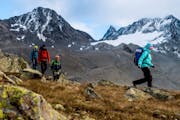
Pay attention to exposure
In spring, the snow melts quickly on south-facing slopes. But things are different on shady northern slopes, where the snow often stays for longer. So when you’re planning your route, think about whether it leads through shady northern flanks. Even short, sloping sections can throw a spanner into the rest of your tour.
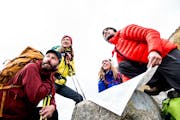
The courage to turn back
What applies to mountain sports in general is particularly important for hikes in spring: having the courage to turn back. If you are not sure whether or not to cross a steep snowfield, it’s better to turn around. Changing your route isn’t a mark against your name. On the contrary: continually adapting the route to the conditions shows wisdom. Ideally, you should always go back the same way on your hike.
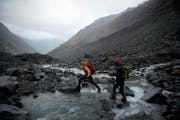
Be wary of snow bridges
Snowfields that at first glance appear to be connected are often washed out by streams and gullies in spring. This removes the snow layer from below. You may not see any of this on the surface, but it increases the risk of breaking through the snowpack. That would be a wet – and dangerous – surprise. Don’t let tracks on your trail deceive you – they could have been laid several days before, and the snowpack may still have been stable then.
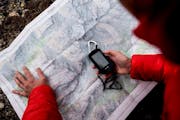
Beware of wet snow avalanches and falling rocks
When you choose your route, consider the slopes above you. Even if your route is free of snow, there may still be old snow above. Significant wet snow avalanches can occur over the course of the day, particularly on south-facing flanks. These often extend into the valley floor and bury supposedly safe, snow-free hiking trails. The same applies to falling rocks.
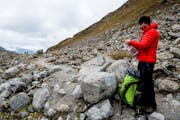
The right equipment
Good hiking shoes are essential in spring, too. With robust mountain boots, you can step into the old snow. An ice pick can also be useful: you can use it to cut steps in the snow or to slow you down if you slip. You should also bring a pair of gaiters along. They keep your shoes and trousers dry if you sink into the snow. Also make sure you pack crampons. This is because the snow melts in warm weather or strong sunlight. It can be dangerous if this meltwater then flows into the cold shade or freezes during the night when temperatures drop. A very thin layer of ice then covers the stones. During the day, this layer often thaws a little again to form a combination of water and ice. This is very insidious because you can hardly see the ice. Light crampons are essential in places like this.
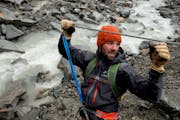
How safe is installed equipment?
Routes with permanently installed equipment such as handrails, ropes and chains often appear safe because they offer support along sloping sections. But be careful: during the winter, this equipment is often dismantled to protect it from avalanche damage and has to be reassembled in spring – often the ropes or chains are lying in the path and you can simply reassemble them. So take care with fixed ropes as they may have been damaged by the winter weather. And: In spring, never hold on to an installation where you cannot see that the end is securely anchored. If you pull lightly, it may hold because the end of the rope is stuck in the snow. But a fall will not hold this construction. My tip: ask locals who know the area (hut wardens, local sections) about the conditions.
Share the articleSafe hiking in spring – what to look out for
- Free shipping from CHF 99
(With the TransaCard always free of charge)
- Secure payment with Twint, Visa and more
- 14 days cancellation right






